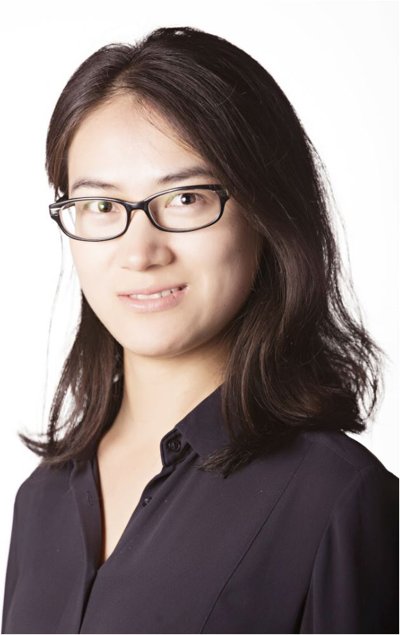3D hierarchical particle assemblies with nanostructure-enabled functionalities
Juan Wang is a PhD student in the research group Biomedical and Environmental Sensorsysems (BIOS). Her supervisors are prof.dr. J.C.T. Eijkel from the Faculty of Electrical Engineering Mathematics and Computer Science (EEMCS) and prof.dr. L.L. Shui from the South China Normal University.
 In this thesis, we develop a reliable and scalable strategy for fabrication of hierarchical structures with multilevel structures on different length scales to provide new types of composite materials. Both the surface morphology and the resulting structure-determined optical properties of this hierarchical structure can be precisely controlled through the developed techniques, thereby offering high potential for applications in the fields of molecular detection, anticounterfeiting, diagnostics, displays, superwetting materials and catalysis. In the course of the investigation, we attempt to explain the physical properties of the created materials and show possible practical applications. 3D hierarchical microspheres with versatile surface morphologies have been successfully fabricated and the resulting structure-enabled functionalities such as localized surface plasmon resonance (LSPR), PSB, slow light effect, and superwettability behaviour with controllable adhesion force have been demonstrated.
In this thesis, we develop a reliable and scalable strategy for fabrication of hierarchical structures with multilevel structures on different length scales to provide new types of composite materials. Both the surface morphology and the resulting structure-determined optical properties of this hierarchical structure can be precisely controlled through the developed techniques, thereby offering high potential for applications in the fields of molecular detection, anticounterfeiting, diagnostics, displays, superwetting materials and catalysis. In the course of the investigation, we attempt to explain the physical properties of the created materials and show possible practical applications. 3D hierarchical microspheres with versatile surface morphologies have been successfully fabricated and the resulting structure-enabled functionalities such as localized surface plasmon resonance (LSPR), PSB, slow light effect, and superwettability behaviour with controllable adhesion force have been demonstrated.
We combine droplet microfluidics, nanoparticle assembly and metal film deposition techniques to create metallic nanoarrays on two-tier spherical photonic crystals (SPCs). These SPCs have high-density scattering sites, the “hotspots”, of which the nanoarray pitch and gap distance can be controlled by the deposited metal film thickness and silica nanoparticle size. This results in an amplified near-field electromagnetic field, achieving the enhanced Raman signal with an enhancement factor of ~107. Then the three-tier SPCs with diverse surface morphologies, multi-scale length and structure-dependent optical properties of both photonic stop band (PSB) and surface plasmon resonance (SPR) have been fabricated by thermal annealing the Au film coated two-tier SPCs. The fabricated SPCs furthermore show a high potential for the application in anticounterfeiting without photodegradation and information security areas due to the color contrast under different illumination modes. The Raman performance of these fabricated three-tier SPCs is further investigated. The amplified electromagnetic field occurred in these three-tier SPCs can not only result from the high density “hotspots” of plasmonic nanoparticle arrays, but can also be substantially improved at the PSB edges of the PC structures. By tailoring both PSB and SPR properties, a synergistic effect on the amplified electromagnetic field can be achieved thereby improving the enhancement of Raman signal. Moreover, we explore the effect of the gas atmosphere on the formation of 3rd-tier morphology during the thermal annealing process of Au film coated two-tier SPCs. Thus hierarchical SPCs featuring silica nanowires are obtained when the applied annealing process in the vicinity of a SiO source under an inert gas (N2/Ar). We show different morphologies of these ‘hairy’ SPCs, for example, directional growth of ‘rod-like’ and radial growth of ‘flower-like’ structures, which is determined by the mass transport of SiO vapor produced at the silicon wafer by Au-catalysed chemical reactions. The observed morphology of SiO2NW growth can be well explained by the existing vapor-liquid-solid (VLS) growth and the SiO mass transport. The resulting material displaying SiO2NW on SPCs as a composite material holds both PSB properties, caused by the preservation of SiO2NP arrangements after high temperature annealing, and a high spatial frequency. As such, it can be used as superwetting materials (self-cleaning, antifogging, oil/water separation) and specific photonic codes for diagnostics. Finally, the advantages of droplet microfluidics are leveraged, to produce hierarchical microspheres featuring wrinkled nanostructures. The produced nanowrinkles (3rd-tier) on the polystyrene (PS) nanoparticle patterns (2nd-tier) are formed due to the interfacial instability induced by gradient photopolymerization of n-isopropylacrylamide (NIPAM) monomers. The morphology of the nanowrinkles can be regulated by the photopolymerization process and the fraction of carboxylic groups on the PS nanoparticle surface. Such a hierarchical microsphere can be seen as mimicking an individual unit of a bioinspired surface, as the surfaces of these fabricated two-tier and three-tier hierarchical microunits collectively exhibit ‘gecko’ and ‘rose petal’ wetting states, with the micro- and nanoscale structures amplifying the initial hydrophobicity but still being highly adhesive to water.





